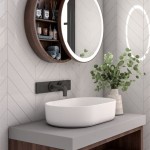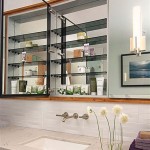Can You Hang a Heavy Mirror on Plasterboard?
Hanging a heavy mirror on plasterboard can be challenging but achievable with the right approach. Plasterboard, also known as drywall or gypsum board, is a common wall material in many homes. However, its relatively thin and brittle nature requires specific considerations when supporting heavy objects like large mirrors.
Understanding the weight limitations of plasterboard is crucial. Standard plasterboard, typically 1/2 inch or 5/8 inch thick, can support a surprising amount of weight, provided it is distributed correctly. However, a heavy mirror concentrated in a small area can easily overload the plasterboard, causing it to crack or crumble, and the mirror to fall.
Determining the weight of the mirror is the first step. Use a bathroom scale or refer to the manufacturer’s specifications to obtain an accurate weight measurement. This information, along with the mirror's dimensions, will help determine the most suitable hanging method.
Several methods are available for hanging heavy mirrors on plasterboard walls. The best method depends on the weight and size of the mirror and the location of wall studs. Utilizing wall studs offers the most secure hanging solution. Studs are the vertical wooden or metal supports within the wall framing and provide significantly more support than the plasterboard itself.
A stud finder can be used to locate the studs behind the plasterboard. Once located, heavy-duty screws can be driven directly into the studs to support the mirror. Ensure the screws are long enough to penetrate the stud adequately, ideally at least an inch into the wood framing. This method is recommended for the heaviest mirrors.
When hanging a heavy mirror where studs are not conveniently located, specialized plasterboard fixings can be used. These anchors are designed to distribute the weight of the object over a larger area of plasterboard, reducing stress and preventing damage. Several types of plasterboard anchors are available, each suited for different weight capacities.
Toggle bolts are a robust option for heavier mirrors. These anchors consist of a bolt and a spring-loaded toggle that expands behind the plasterboard, creating a secure grip. The toggle spreads the weight across a larger area, providing a strong hold even in hollow walls.
Hollow wall anchors, also known as Molly bolts, are another suitable option. These anchors use a metal sleeve that expands when a screw is tightened, creating a firm grip against the back of the plasterboard. While suitable for medium-weight mirrors, they may not be as strong as toggle bolts for exceptionally heavy ones.
Self-drilling plasterboard anchors are a simpler option for lighter to medium-weight mirrors. These anchors feature a sharp point that allows them to be driven directly into the plasterboard without pre-drilling. They are quick and easy to install but offer less holding power than toggle bolts or hollow wall anchors.
Adhesive hangers, specifically designed for mirrors, can also be used. These hangers use a strong adhesive to bond the hanger directly to the plasterboard. While convenient, they are generally recommended for lighter mirrors and may not be suitable for very heavy or large ones. Carefully check the weight limitations specified by the manufacturer before using adhesive hangers.
Regardless of the chosen method, proper installation is essential. Ensure the chosen anchors are appropriate for the weight of the mirror and the type of plasterboard. Follow the manufacturer's instructions carefully for installation. Using the correct tools and techniques will ensure a secure and stable hanging, minimizing the risk of damage to the wall or the mirror.
Distributing the weight evenly is important, especially for large mirrors. Multiple hanging points can help distribute the load and prevent excessive stress on any single point. Using a level ensures the mirror hangs straight and reduces strain on the hanging hardware.
For extremely heavy mirrors, especially those exceeding the recommended weight limits for standard plasterboard fixings, reinforcing the wall behind the plasterboard may be necessary. This can involve adding additional support to the wall framing or using a thicker, stronger type of plasterboard.
Consulting a professional handyman or contractor is advisable when dealing with exceptionally heavy mirrors or complex installations. They possess the experience and expertise to assess the specific situation and recommend the most appropriate and safe hanging method. They can also provide assistance with reinforcing the wall if necessary.
Choosing the appropriate hanging method and ensuring proper installation are critical for safely and securely hanging a heavy mirror on plasterboard. Careful consideration of the mirror’s weight, dimensions, and the wall’s structure will help ensure a successful and long-lasting hanging solution.

Hanging Heavy Mirror On Plaster Walls 6 Steps With Pictures Instructables

How To Hang A Heavy Mirror On Plasterboard Timber Framed Wall

How To Hang A Large Or Heavy Mirror
How Heavy Of A Mirror Can You Hang In Drywall Quora

How To Hang A Very Heavy Picture Or Mirror The Best

Gripit How To Hang A Mirror Onto Plasterboard Wall

How To Hang A Very Heavy Picture Or Mirror The Best

How To Hang A Heavy Mirror Or Picture Right The First Time

How To Hang A Heavy Mirror Lowe S

How To Hang A Mirror The Ultimate Step By Diy Guide Aspect Wall Art








